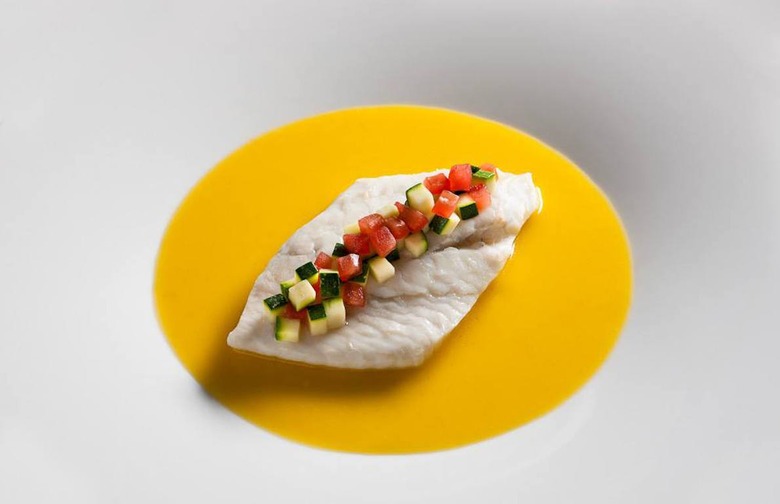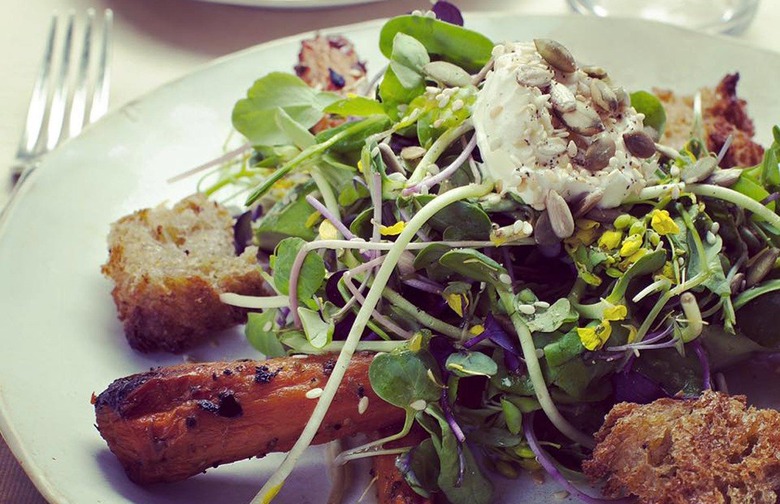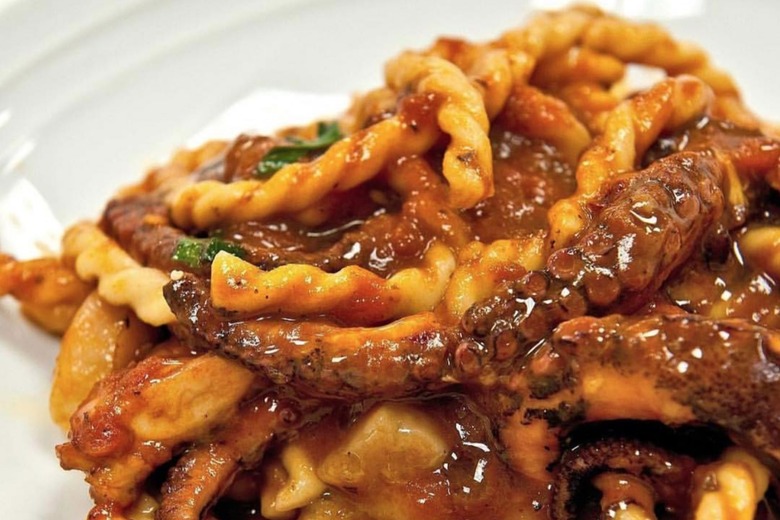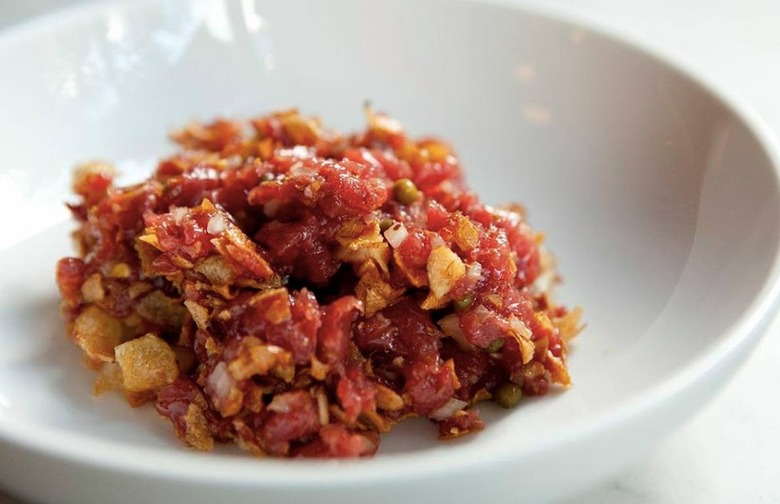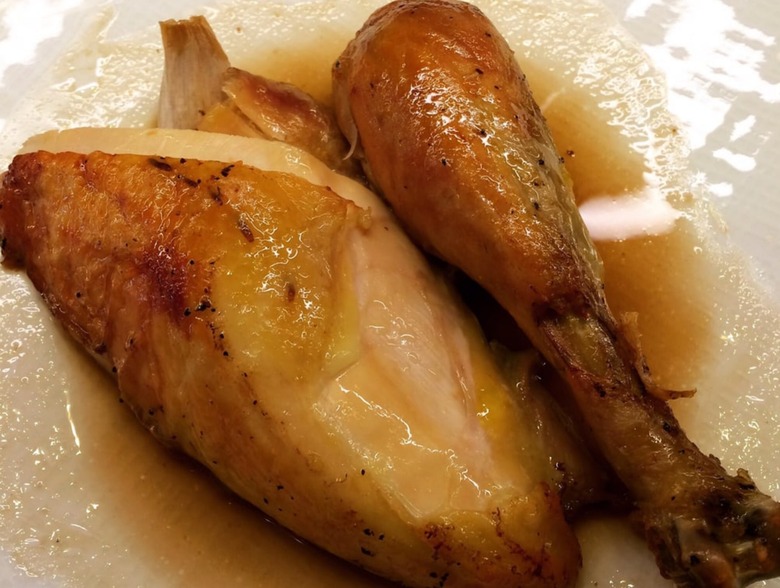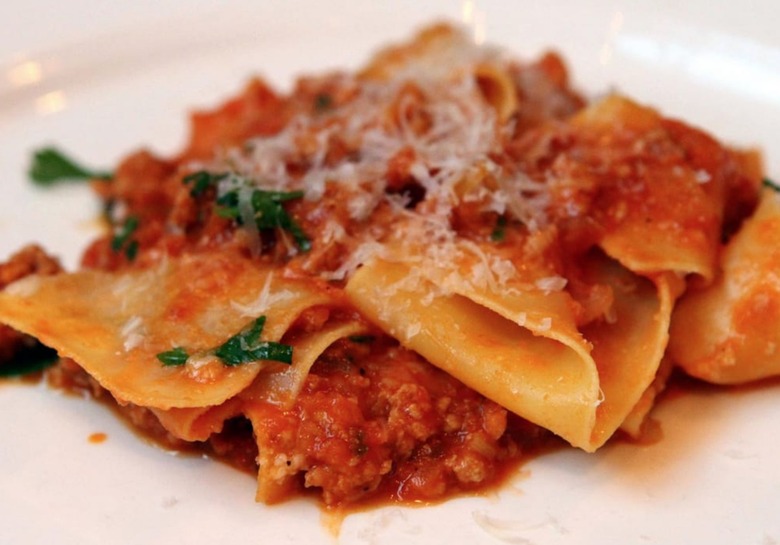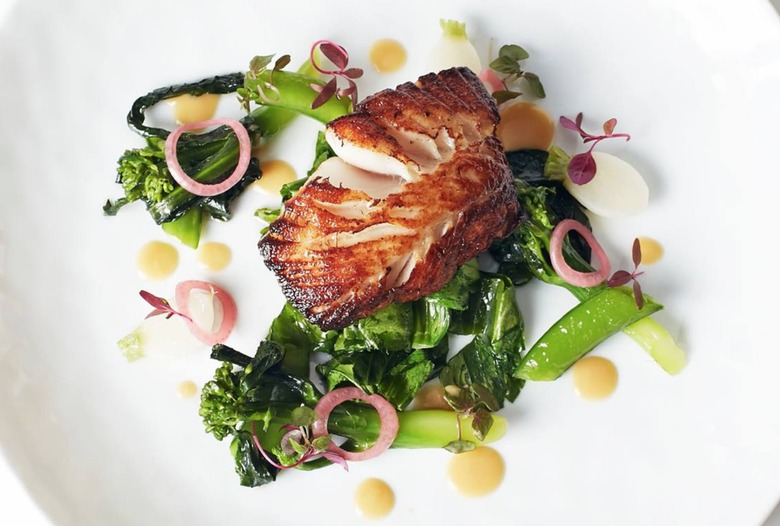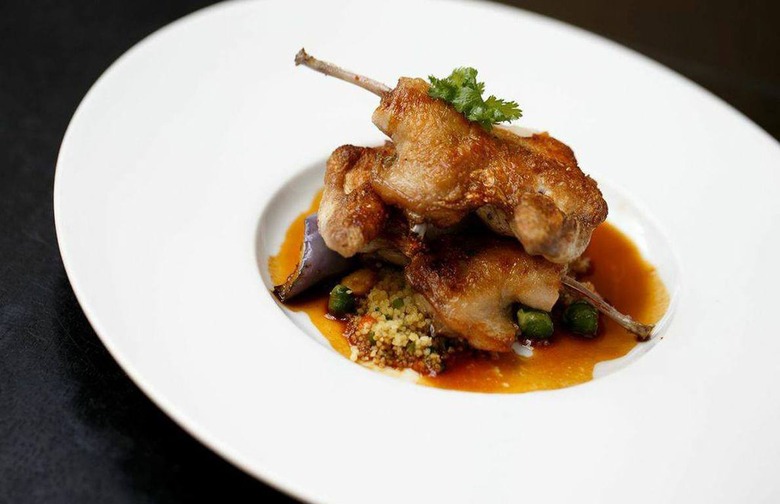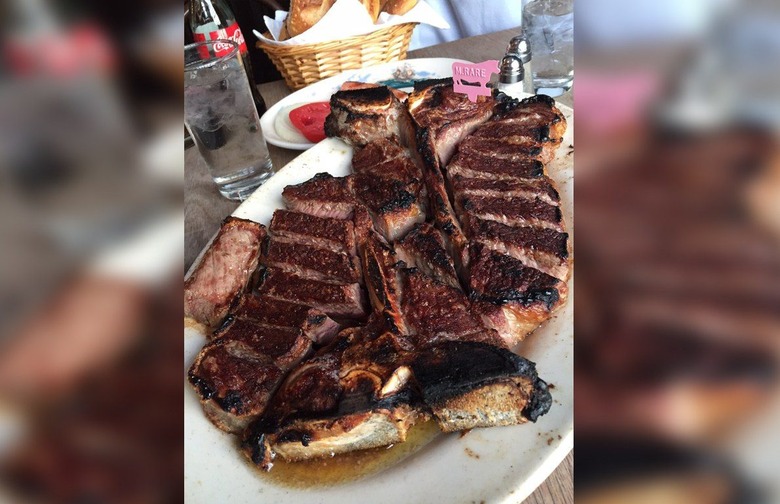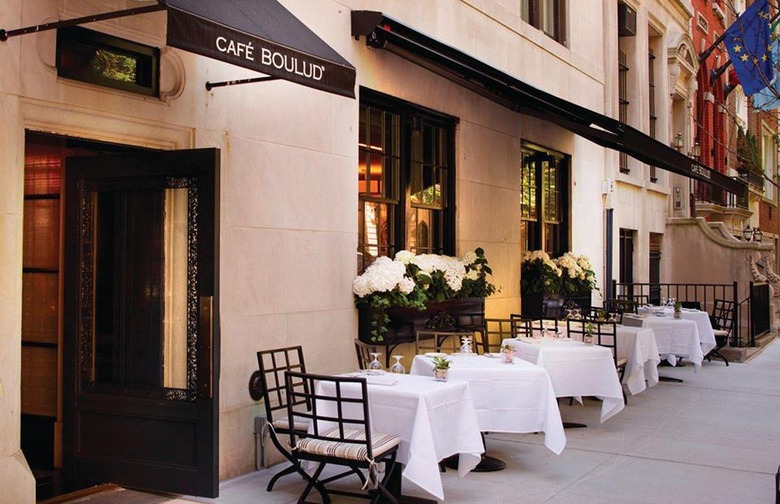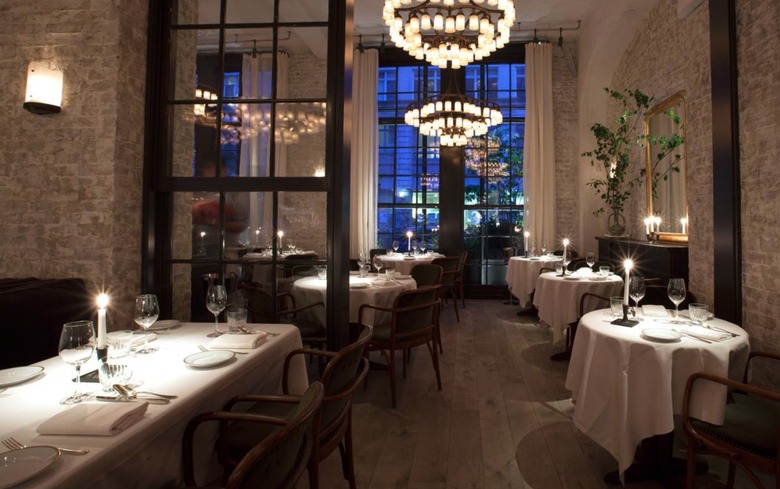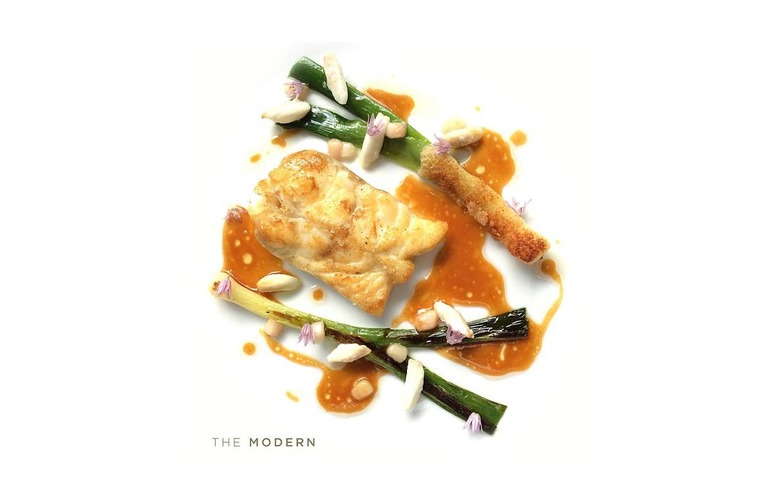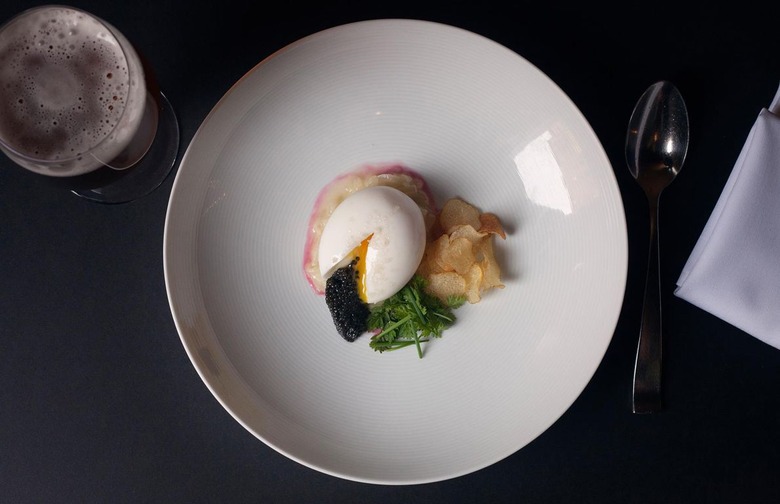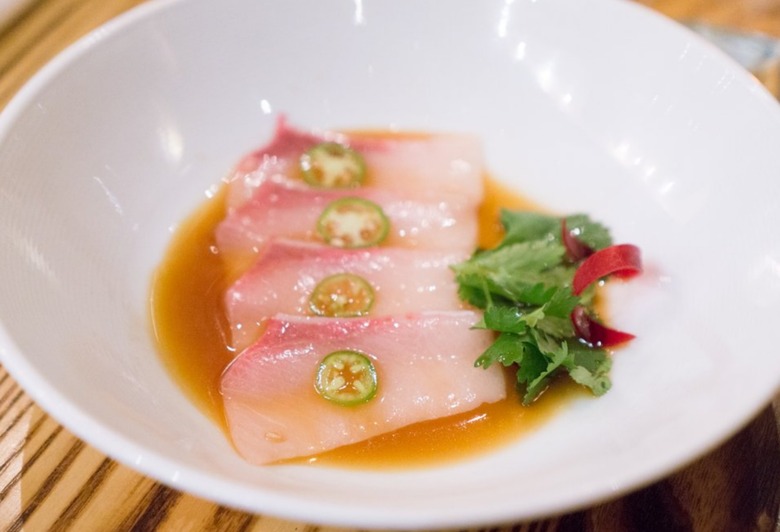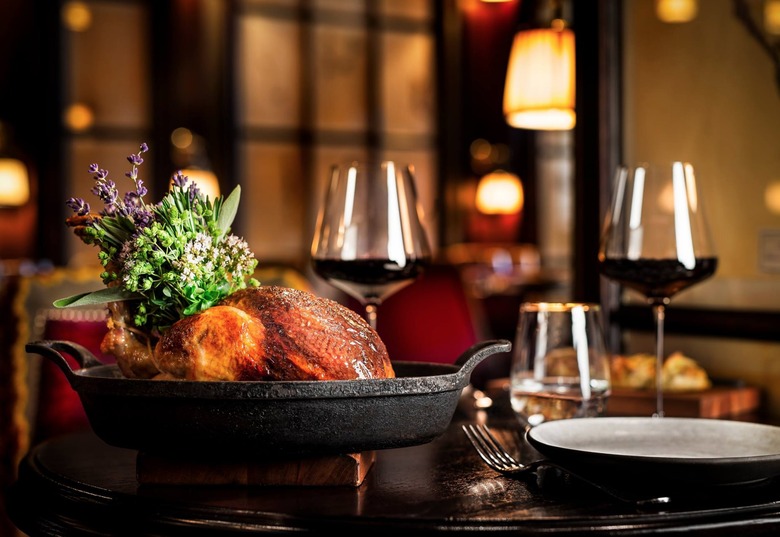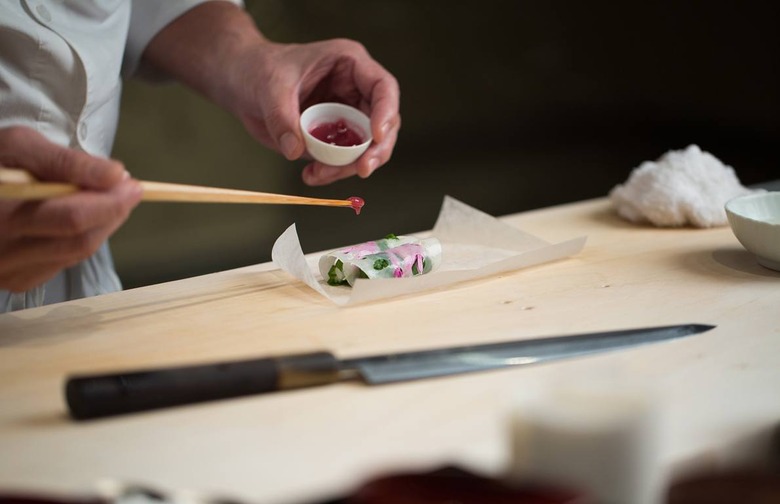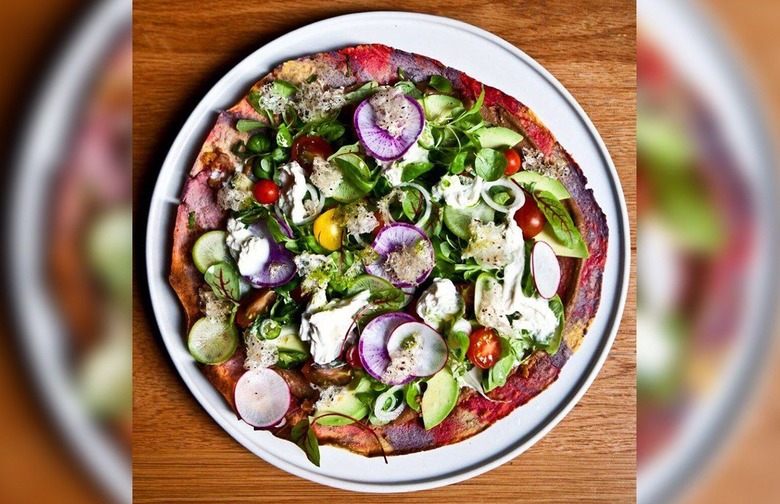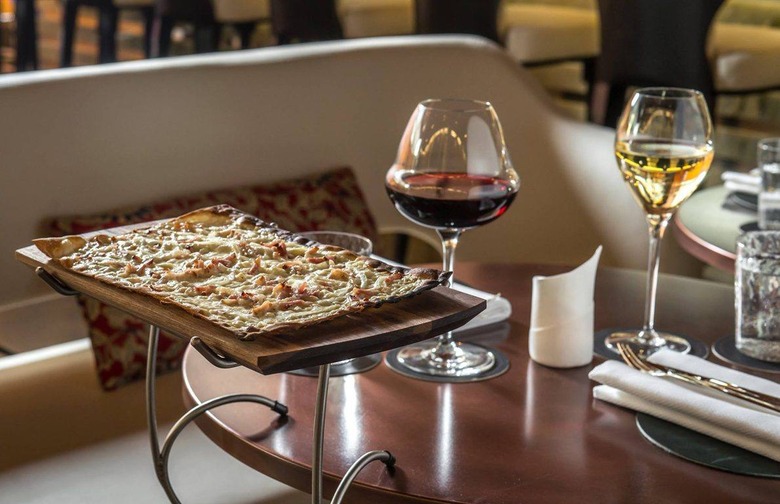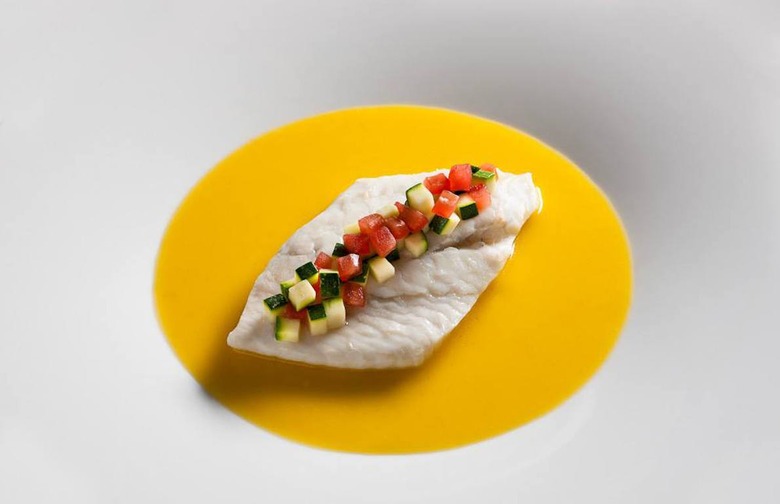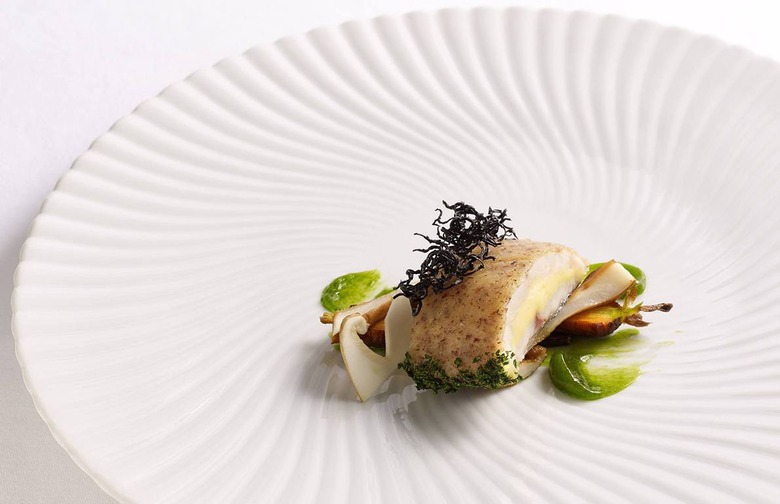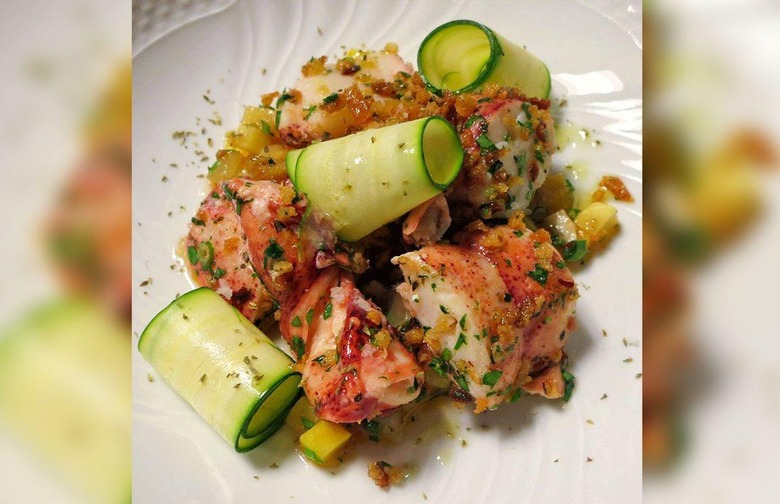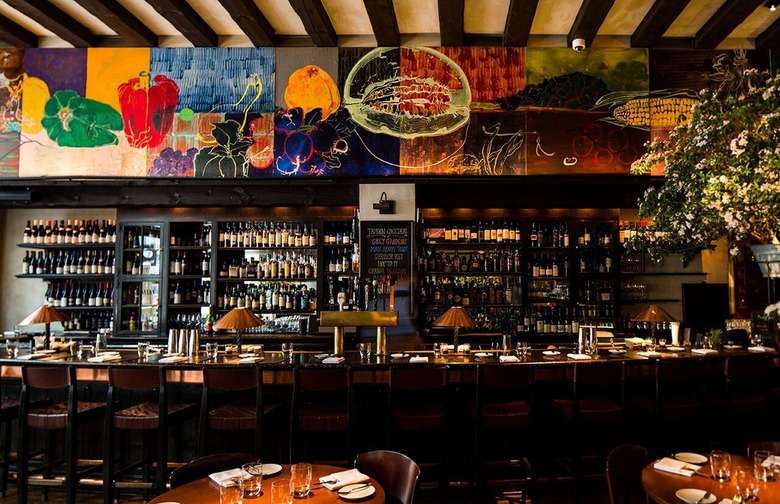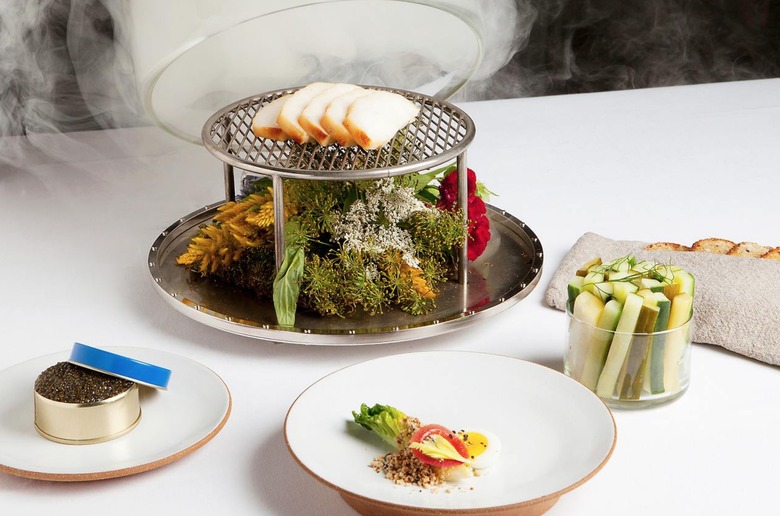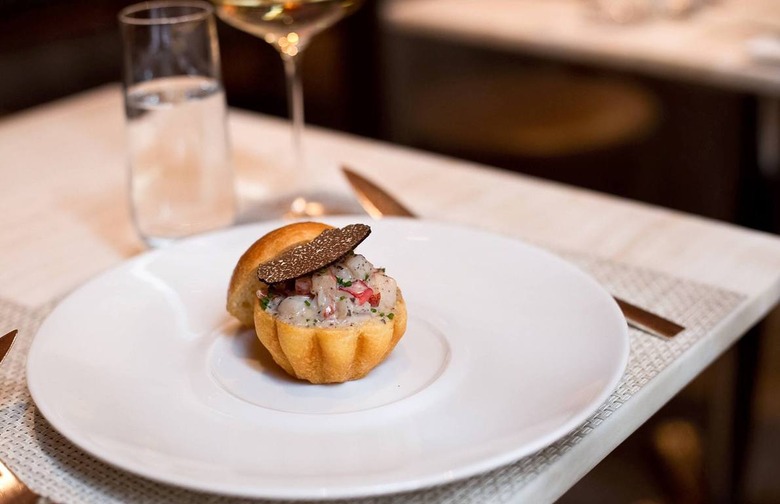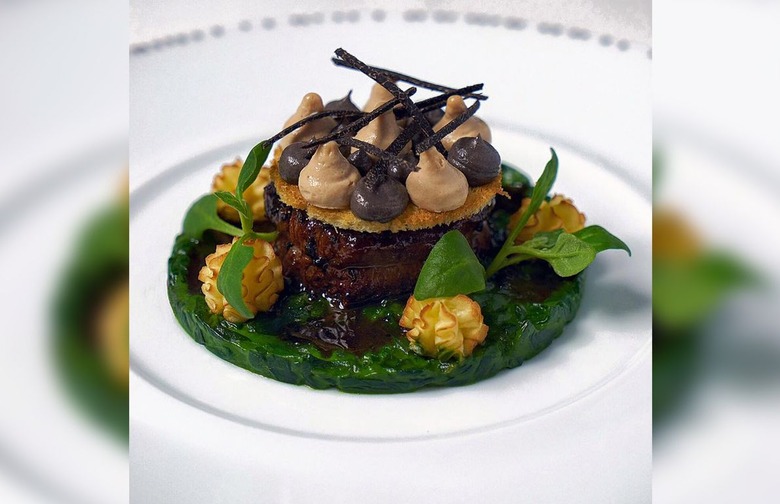The Best Restaurants In New York City For 2017
Every year since 2011, we've set out to identify the 101 best restaurants in America, and one city has always found itself with more entries than any other. You guessed it: New York. This year, 23 restaurants from the five boroughs made the ranking, and they represent the best fine-dining The Big Apple has to offer.
#24 ABC Kitchen
ABC Kitchen is a celebration of the best ingredients that each season has to offer, all served in the classically elegant style for which Jean-Georges Vongerichten is widely known. The original driving force behind ABC Kitchen, Dan Kluger, left in mid-2014 to work on his own projects (his Loring Place opened late last year), but current executive chef Ian Coogan hasn't missed a beat. Market-fresh dishes like roasted carrot and avocado salad with crunchy seeds, sour cream, and citrus stand alongside a pleasing selection of housemade pastas, whole wheat crust pizzas, and creative entrées. The décor is fresh, with an utterly cool urban sophistication that pairs perfectly with the style of the home furnishings store it's connected to, ABC Carpet and Home. The restaurant remains in the rotation for serious restaurant-goers in New York City.
#23 Marea
When it opened, Marea was immediately acclaimed as one of the most original and consistently wonderful upscale Manhattan restaurants in recent memory. This very handsome establishment on Central Park South, in a sunny dining room that long housed San Domenico, specializes in exquisitely fresh fish and shellfish in Italian-inspired preparations by skilled chef and restaurateur Michael White. Try the crostini with lardo and sea urchin, which caused waves of buzz at the time and has since become one of the city's "checklist" dishes, or the fusilli with octopus and bone marrow.
#22 Estela
What do you get when former Blue Hill at Stone Barns (No. 11) beverage director Thomas Carter pairs with a Uruguay-born chef who has worked with Argentinian grill-master Francis Mallmann and Slow Food icon Alice Waters, and at Isa and Il Buco? One of New York City's hottest restaurants. This NoLita gem features a relatively compact, rarely changing menu of shareable plates with a largely Mediterranean focus. Chef Ignacio Mattos' food has been described as simple in appearance while simultaneously strange but right. Perhaps it shouldn't be a surprise that the advice he gave in 2014 during an interview sounds like that of a culinary pioneer: Do your own thing, undersell and over-deliver, stop overthinking everything, and drop acid. OK, so he meant citrus and vinegar, but some of his philosophy does run counter to many current trends: Ignore the seasons, cook the familiar, lose the tweezers, and win with bread. The execution at Estela won't disappoint. Some of the chef's most heralded dishes are his beef tartare with sunchoke and his mussels escabeche. For something heartier, try the pork with Périgord truffle and greens or steak with eggplant, leeks, and taleggio. And you probably won't want to miss the burrata with salsa verde and charred bread and the endive with walnuts, anchovy, and ubriaco rosso, which is what President Obama and his wife ordered on their visit in late 2014.
#21 Le Coq Rico
Perhaps no other American restaurant devotes so much attention (or menu space) to poultry as this Flatiron newcomer, where five different breeds of whole chicken are on offer, each listed with its age at slaughter. There's Brune Landaise (110 days, $100), Plymouth Barred Rock (90 days, $98), New Hampshire (90 days, $98), Rhode Island (120 days, $98), and Catskill Guinea Fowl (130 days, $98) — and if the prices seem high, consider that these are mostly large birds, which can serve three or four diners each. (For reference, most commercial chickens are slaughtered at 40 days.) Bronzed, juicy, tender, and intensely flavorful, one bite will have you saying, "So this is what chicken is supposed to taste like!" Poultry also appears in a wide variety of preparations, ranging from chicken velouté to chicken and Maine lobster vol-au-vent.
#20 Babbo
As Mario Batali continues his reign atop the American culinary landscape, his flagship restaurant, Babbo, remains a New York essential. What can you say about it that hasn't been said? The pasta! That pork chop! Mario Batali is a genius! Well, sure, but the restaurant is a testament to his undying mission of keeping the food as close to Italy as possible. Whatever specialty ingredients aren't imported from there are made at Babbo "as an Italian might in the Mid-Atlantic/Hudson region." Although Babbo is nearly 20 years old (it opened in 1998), it's still difficult to get a table. Not a surprise considering it would essentially be a four-star restaurant if former New York Times restaurant critic Frank Bruni had liked Led Zeppelin a little more. But it's not utterly impossible, especially if you don't mind sitting at the bar. Either way, you're going to want to arrive hungry, because the seven-course pasta menu is not for the faint of heart. Must-order dishes? Considering that the menu has become its own greatest hits list, that's a tough call. You can explore Italy by land and sea with things like grilled octopus in spicy limoncello vinaigrette or pig foot milanese, but you'll probably want to make sure you at least try the mint love letters with spicy lamb sausage; black spaghetti with rock shrimp, spicy salami calabrese, and green chiles; and beef cheek ravioli.
#19 Aureole
Veteran chef, restaurateur, and hotelier Charlie Palmer's handsome, grown-up-looking Aureole, just off Bryant Park in midtown Manhattan, serves sophisticated modern American fare through three tasting menus (three courses for $96, five for $125, seven for $148). The food is finely crafted and always interesting, but remains refreshingly straightforward, too. The signature "vitello tonnato" deserves the quote marks because instead of being the usual Italian classic of thin-sliced roast veal dressed with tuna mayonnaise, it combines yellowfin tuna with slow-cooked veal tongue — to unforgettably tasty effect. Other dishes might include roasted heirloom beets with burrata, spicy rocket (arugula), and pistachio; buckwheat cavatelli with speck, chestnuts, Savoy cabbage, and fontina; or Griggstown pheasant with black truffle bread pudding, heirloom carrots, and Brussels sprouts. The wine list is noteworthy, as are the free-corkage policy on Monday nights (with some restrictions) and the Saturday night descending-price offering, wherein a glass of some premium Bordeaux, trophy cabernet, or other pricey wine is offered at a price that drops every hour through the evening as long as the supply lasts.
#18 Gotham Bar & Grill
Most New York City restaurants would consider themselves lucky to even get a review in The New York Times. Since it opened in 1984, Gotham Bar and Grill has been reviewed no fewer than six times by the Gray Lady. Even more impressive, it has scored 15 stars — five three-star reviews (four is the best) since chef Alfred Portale took over in 1985. The culinary style might be called classic new American, which translates to such dishes as yellowfin tuna tartare with Japanese cucumber, shiso, and sweet miso ginger vinaigrette; seared Hudson Valley foie gras with fresh figs, toasted almonds, oats, dried fruit compote, and date purée; and grilled branzino with cranberry beans, chorizo, caramelized fennel, cippolini onions, and romesco. Want to hear a fun fact about Portale's signature stacking style for plating food? The chef said it originated out of him trying to find ways to do more with less. "Rather than trying to cook a big piece of fish, I'd cut it into two thin pieces and then stack them."
#17 Peter Luger
When you sit down at your table at the perpetually packed Peter Luger, located in an off-the-beaten-path corner of Brooklyn's Williamsburg neighborhood, don't ask for a menu. Just order the tomato and onion salad, thick-cut bacon, creamed spinach, hash browns, and steak for two — a massive porterhouse, broiled under extreme heat before being sliced, briefly broiled again, and presented on a platter. Sure, the wait staff might be a bit gruff in this surprisingly casual German-styled steakhouse that's been here since 1887, but that's all a part of the show. The star attraction, the steak, is among the best you'll find in New York City. It's dry-aged and butchered on-premises, and when it's presented, in all its crusty, well-marbled, beefy glory, your jaw will drop. Use the house steak sauce to douse the onions and tomatoes (don't let it anywhere near the steak), and bring a debit card or be prepared to drop a wad of cash on the table before leaving — no credit cards accepted here, big spender.
#16 Café Boulud
After a succession of three fine chefs — Andrew Carmellini, Bernard Chemel, and Gavin Kaysen — helped earn and maintain a sterling reputation for this stylish, polished French-with-international-accents establishment on the site of overseer Daniel Boulud's original Restaurant Daniel, Aaron Bludorn — who had worked at the lamented Cyrus in Napa when it won its second Michelin star — is keeping up the standard. Boulud obviously knows how to pick 'em. Bludorn can go traditional and do it well (striped bass with pommes purée, baby leeks, and sauce meurette). He can evoke the season vividly (beef Wellington with rutabaga, celery root, cabbage, Dijon mustard, king trumpet mushroom, and sauce au poivre), and he seems to have an instinctive touch with the regional and international cuisines celebrated on the menu's "Le Voyage" section (currently, New Orleans is honored with, among other dishes, bronzed redfish with crab-stuffed mirliton, andouille jambalaya, and crème de crevettes). In the ever-changing upscale restaurant landscape of Manhattan, Café Boulud maintains an admirable consistency.
#15 Le Coucou
Perhaps no new restaurant received as many plaudits last year as Le Coucou, the upscale French restaurant from restaurateur Stephen Starr and chef Daniel Rose — an American whose other establishments, Spring, La Bourse et la Vie, and Chez la Vieille are in Paris — and that's breathing new life into a fading genre. Many consider it to be a legitimate paradigm-shifter, returning French classics like quenelle de brochet, crepinette de volaille aux foie gras, and tête de veau ravigote to their rightful place in New York's fine dining canon without the usual stuffiness or pretension. It's classic New York, classic French, and an absolute must-visit.
#14 The Modern
Given that this two Michelin-starred Danny Meyer restaurant is located within the renowned Museum of Modern Art in New York, it's no wonder that design plays such a vital role here, both in the decor and on the plate. The restaurant is divided between the fine dining room and the bar room, which serves a completely different menu. Chef Abram Bissell's menu is inspired by the cuisine of Alsace, but executed with a distinctly modern hand. The handcrafted cocktails, spiked with house-made liquors, and the notable wine program are also outstanding. Opt for the three- ($118), or six- ($158) course dinner in the dining room and you'll quickly understand what makes this 12-year-old restaurant so special. Gently seared prawns with grapefruit confit and pickled black radish; slow cooked sea bass with sunchoke rissoles and watercress broth; and bone marrow crusted beef with salt baked celery root and black truffle are just a handful of the brilliant, yet still delicious creations you might sample.
#13 Momofuku Ko
After David Chang moved the noodle bar that launched his career, he filled its space in 2008 with Momofuku Ko ("son of Momofuku"), a simple counter with a handful of stools and chefs preparing a constantly changing tasting menu in full view of the diners' tasting menu spot. It made him even more famous. The no-frills space had so many clamoring for a seat that the restaurant implemented what seemed then like an outrageous online-only reservations system that spawned its own black market. Media culinary elite and curious diners started waking up early to furiously click on a possible Momofuku Ko reservation link before it disappeared. One can argue that the city, and the nation's restaurant scene, hasn't been the same since. But Chang decided to close the most upscale and in-demand of his restaurants to re-open several blocks away, where he gained 10 seats around a black-walnut counter, a six-stool bar, five times the wine storage, and a private dining room. Diners hoping to enjoy the multi-course, two- to two-and-a-half-hour tasting helmed by Momofuku veteran chef Sean Gray, however, will find that reservations are just as tough to get as ever, but if you snag a table expect to encounter dishes like chicken fried oyster puff with aioli, uni with chickpea puree and olive oil, and beef that's been aged for nine weeks.
#12 Nobu
When chef Nobu Matsuhisa opened his eponymous restaurant with pal Robert De Niro and restaurateur Drew Nieporent in New York's TriBeCa neighborhood in 1994, there was no way he could have imagined that more than 20 years later he'd be running more than 30 affiliated restaurants around the world, as well as nearly a dozen Nobu-branded hotels. But there's a reason why Nobu has become a household name across the globe, and a visit to the Michelin-starred New York Nobu flagship tells you all you need to know. The design by architect David Rockwell evokes the Japanese countryside while conveying excitement and energy, and the cuisine fuses classical Japanese with that of Peru and Argentina, where Nobu trained. The standout dishes, including yellowtail with jalapeño, lobster with wasabi pepper sauce, and the widely copied black cod with miso, are nothing short of legendary, but if you want to experience them where it all started in TriBeCa, you have less than a year to do it. The 9,000-square-foot establishment will soon be relocating from into a 14,384-square-foot space in the former AT&T building in the heart of the Wall Street/World Trade Center area.
#11 NoMad
With an atmosphere The New York Times' restaurant critic Pete Wells described as "like a Riviera home rented out to a rock band," chef Daniel Humm and restaurateur Will Guidara's The NoMad continues to impress with its extensive menu that puts the "restaurant" back in "hotel restaurant." The clubby but airy dining room features what has become a legendary New York dish — roast chicken for two with foie gras, black truffle, and brioche ($89) — not to forget delights like suckling pig confit with red endive, dandelions, and dates; or butter-poached lobster with pork cheeks, Brussels sprouts, and brown butter. If you're looking to get a taste of that famous chicken but aren't quite ready to splash out, stop by for the more affordable $24 sandwich version served during brunch.
#10 Masa
Former New York Times critic Sam Sifton took Masa down to three stars from the four given to it by his predecessor, apparently in part because they made him wait outside when he showed up early, didn't explain all the dishes, and didn't pay him much attention after dessert. That doesn't seem to have discouraged the high-rollers who crowd the sushi bar or — losing some of the immediacy of the experience — sit at one of the small tables. Masa's toro-stuffed maki rolls have been known to inspire lip-twitching and eye-rolling, and the toro with beluga caviar seems almost worth the price of admission. And what a price that is: The swanky Time Warner Center setting and elaborate omakase-only menu is accompanied by a high bar for entry. At an astonishing $595 per person before beverages (service included; they did away with tipping last year), you're looking at a bill that can easily total more than $1,500 for two.
#9 Cosme
After years of hearing the refrain that "there's no good Mexican food in New York," New Yorkers now seem to have new Mexican places popping up everywhere, each purporting to be the Mexican-starved Gothamite's salvation. Alex Stupak has taken several stabs at it; April Bloomfield too. Texas chefs like San Antonio's Jesse Perez have started trying to bring the goods; there have been pop-ups; and even Tex-Mex is getting some traction with restaurants like Javelina. Meanwhile, one of Mexico City's most well-respected chefs has set up in the Flatiron District, with great success. Cosme represents chef Enrique Olvera's return to New York (he attended the Culinary Institute of America in Hyde Park before going home to Mexico City to open the recently-reimagined Pujol. But Cosme isn't the Mexican that New York's chefs play at, trying to "upscale" a cuisine whose essentials they've never mastered. Olvera, who we crowned the 2015 International Chef of the Year, has the chops to carry off dishes like uni tostada with avocado, bone marrow salsa, and cucumber and half lobster pibil with chorizo and black bean purée. And his duck carnitas — a whole bird cooked for days in ingredients that include Mexican Coke until it shreds easily into tender morsels — served with just-made warm tortillas is one of the great duck dishes in the city. True, it carries a $89 price tag (up $20 from last year), but it's enough for three or four.
#8 Gabriel Kreuther
It's rare that a serious restaurant hits the ground running as successfully as Alsatian-born chef Gabriel Kreuther's eponymous establishment (and recent addition to the Relais & Châteaux Association) did when it opened in 2015. Kreuther cooked under fellow Alsatian Jean-Georges Vongerichten and then at Atelier in the Ritz-Carlton New York before earning attention and acclaim at The Modern (No. 38), Danny Meyer's fine-dining-plus-casual-bar-food venue at the Museum of Modern Art. He left the last of these early in 2014 and opened this place, a gorgeous dining room (in an unpromising-looking 42nd Street storefront), given a suggestion of rustic charm with massive timbers salvaged from a barn in Vermont and suffused with warm, soft light. Here, Kreuther crafts exquisite plates in a style that owes much to his native territory, much to the freedom of imagination a chef of any provenance in modern-day Manhattan enjoys, and much to his first-rate raw materials, whether they come from Long Island, Nova Scotia, or Hawaii. Dishes (think sturgeon and sauerkraut tart with American caviar mousseline or Berkshire pork tenderloin with grilled radicchio, ricotta salata, and housemade blood sausage) are presented with lapidary precision, sometimes almost sculptural on the plate, but the manipulations aren't visual indulgence: They help emphasize the contrasting flavors and textures of the food. Service is skilled, and the wine list — though bereft of bargains — is very impressive, above all in the excellent vintages of Alsace.
#7 Jean Georges
Jean-Georges Vongerichten is one of the few chefs in New York City with the distinction of four stars from The New York Times. At his eponymous restaurant in the Trump International Hotel and Tower, one of the few restaurants left in New York where gentlemen are required to wear jackets, his classic French technique bridges old and new worlds, eschews heavy sauces, and embraces the spice and flavors of Asian cuisine. The prix fixe menu at Jean Georges, executed by executive chef Mark Lapico, features an assortment of the chef's signature dishes, like sesame-crusted foie gras with dried chiles. Vongerichten's signature "Egg Caviar," a lightly scrambled egg topped with whipped cream and ossetra caviar, is one of the city's great bites of food.
#6 Per Se
In an elegant dining room overlooking Central Park in the Time Warner Center, Per Se upholds the standards set by Thomas Keller at The French Laundry, (see No. 5) receiving an annual three-star rating from Michelin since 2006. As at The French Laundry, there are two tasting menus, one of which is vegetarian, but the Keller classic "oysters and pearls" is most definitely included in the non-vegetarian version (though the Per Se menus cost $325, while The French Laundry's are a more affordable $310). There is also a salon menu, with à la carte offerings including ricotta agnolotti, butter-poached Nova Scotia lobster, and 100-day dry-aged Snake River Farms' beef tartare. While a January 2016 New York Times review shocked the food world by bumping it down from four stars to two, chef Eli Kaimeh does Keller proud with his skillful interpretations of this most refined style of cooking.
#5 Del Posto
Del Posto is the result of a collaboration between Joe Bastianich, Lidia Bastianich, and Mario Batali. With these three big names banding together, the result may be (as Del Posto's website proclaims) "the ultimate expression of what an Italian restaurant should be." As a relative newcomer to the fine dining scene, Del Posto opened in 2010 in New York's Meatpacking District, and received a coveted four-star review from The New York Times, the first Italian restaurant to do so in nearly four decades. Executive chef Mark Ladner left in January to launch a quick-serve pasta concept called Pasta Flyer and former chef de cuisine Melissa Rodriguez has taken over (she's now, amazingly, the first women to helm a New York kitchen that's received four stars from the Times); she's in the process of rolling out a new menu, but the restaurant hasn't skipped a beat.
#4 Gramercy Tavern
Gramercy Tavern is among the finest of the new wave of classic American restaurants; remember that Tom Colicchio was founding partner and chef before he left to open his own restaurants and become a TV star. With Danny Meyer running the show and Michael Anthony (who previously spent time at Daniel and helped Dan Barber develop his influential style at Blue Hill at Stone Barns) in control in the kitchen, the restaurant continues to excel at serving refined American cuisine without pretension. Anthony, inspired by the nearby Union Square Greenmarket, has become known for his simple vegetable preparations. Dishes use produce to great effect, such as flounder, honeynut squash, Brussels sprouts, and pumpkin seeds; or Arctic char, cabbage, radish, and bacon. Whether you sample the six-course seasonal or vegetable tasting menus in the dining room, or opt for a more casual, à la carte meal in The Tavern (where there's a secret, off-the-menu burger during lunch), from the artwork to the lavish floral arrangements, and from the copper-and-candle glow to the reputation for flawless service, a meal at Gramercy Tavern is one you're not likely to forget anytime soon.
#3 Eleven Madison Park
Although Eleven Madison Park opened to much fanfare and subsequent acclaim in 1998, it was Danny Meyer's hiring of Swiss-born Daniel Humm to helm the kitchen in 2006 that elevated the place to the level of the finest restaurants in the country. Humm — who has won such plaudits for the restaurant as four stars from The New York Times (more than once, most recently by Pete Wells) three from Michelin, and the number three spot on The World's 50 Best list (the highest of any American restaurant) — bought Eleven Madison from Meyer in 2011, in partnership with his front-of-house counterpart, Will Guidara, and didn't miss a beat. The chef is firmly in control: While Humm will tailor his single $295 multi-course tasting menu to accommodate allergies, dietary restrictions, and ingredient preferences, there is no à la carte selection or smaller menu available. The particulars of the dishes change frequently, but the technique is contemporary French and modernist. The ingredients are heavily New York-based, and the culinary traditions on which the food is based are often those of Gotham street or deli food, producing notably unique results (a roasted dry-aged duck, scented with lavender and honey, is a standby). The restaurant will close for three months for a thorough renovation of the kitchen and dining room this June (its first-ever revamp); until then the nine-course tasting menu will get two additional courses, and all 11 of them will highlight the restaurant's greatest hits. What the new look and revised menu will have in store are keeping well-heeled New Yorkers on the edge of their seat.
#2 Le Bernardin
This elegant seafood restaurant, headed by chef Eric Ripert, has topped many "best of" lists and has several accolades under its belt, including repeat four-star reviews from The New York Times (the first of them written only a few months after its opening), perfect food ratings in the Zagat guide from 2011 to 2013, and more James Beard Awards than any other restaurant in New York City. Ripert is an artist working with impeccable raw materials. The four-course, $150 prix fixe dinner features a list of delicacies from the sea, ranging from "almost raw" first courses to "lightly cooked" mains to (if you must) "upon request" dishes like squab, lamb, and filet mignon. A seven course, $180 Le Bernardin tasting and an eight-course, $220 Chef's Tasting are also available. Eat in Le Bernardin's modern dining room against a backdrop of painted waves and enjoy dishes like seared langoustine with fennel mousseline and spiced citrus-sambal sauce; poached halibut with Manila clams and wild mushroom casserole; and grilled escolar and seared wagyu beef with wild mushroom "endive farcie" and red-wine-peppercorn sauce.
#1 Daniel
A very grown-up restaurant on Manhattan's Upper East Side, Daniel Boulud's flagship Daniel maintains standards of service and cuisine — French haute cuisine, very much an endangered species today — that hark back to an earlier era. But the cooking is up-to-date and superb, and the menu changes daily. If you are lucky enough to score a reservation, you may sample dishes as part of a four-course $142 or seven-course $234 prix fixe menu under the watchful eye of executive chef Jean-François Bruel. Poularde and foie gras mosaic with rutabaga, kohlrabi, birch-roasted Asian pear, Burgundy truffle vinaigrette, and hazelnut toast; roasted veal sweetbread with parsnip mousseline, satsuma, pickled kumquat, and wasabi-rosemary jos; and black truffle crusted Dover sole with salsify, crisnes, and sauce Périgueux are among the dishes you might be served.
